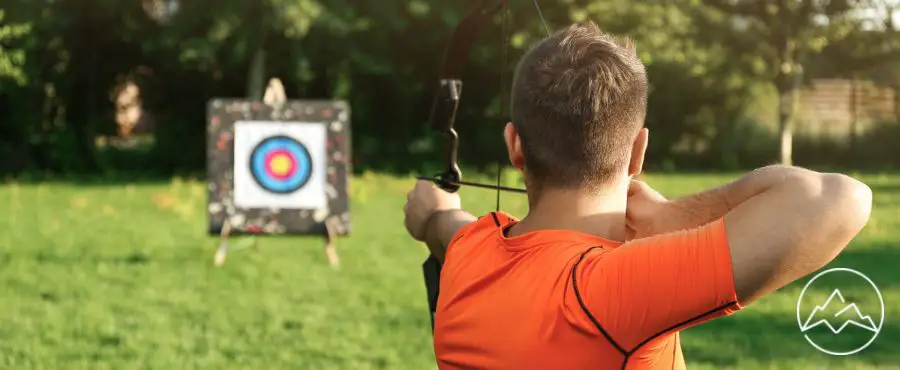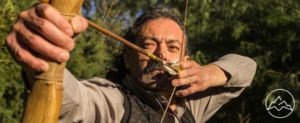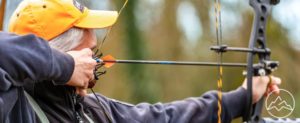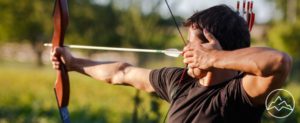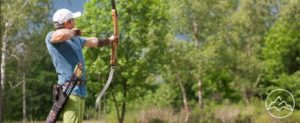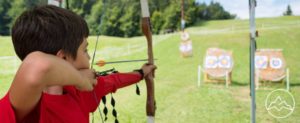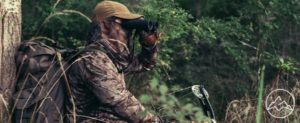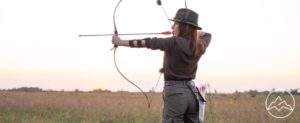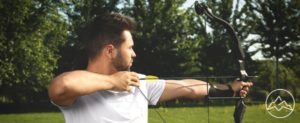Mastering archery is an exciting and rewarding journey, and your first lesson is the perfect starting point. As you embark on this endeavor, it is essential to prioritize safety, adhering to basic rules such as never aiming at people or objects other than the target and avoiding dry firing the bow. In your first lesson, you will receive a comprehensive overview of archery equipment, familiarizing yourself with the various components of the bow and arrow. Proper storage of the equipment when not in use is crucial. The shooting process involves several steps, including stance, nocking the arrow, posture, alignment, drawing the bow using back muscles, and finding anchor points. Aiming can be done through the dominant eye, utilizing sights or relying on instinct. Releasing the bow requires relaxing the fingers or applying pressure to a mechanical release aid. Feedback is an integral part of evaluating your shot and making necessary adjustments. Engaging shooting games and activities may be incorporated to make the lesson more enjoyable. Ultimately, your first archery lesson will lay the foundation for your journey in mastering this exhilarating sport.
Key Takeaways
- Mastering archery is an exciting and rewarding journey
- Prioritize safety: never aim at people or objects other than the target, avoid dry firing the bow
- Comprehensive overview of archery equipment in first lesson: storage is crucial when not in use
- Shooting process involves several steps: stance, nocking the arrow, posture, alignment, drawing the bow, finding anchor points
What to Expect
During the first archery lesson, participants can expect to learn about basic safety rules, become acquainted with the different parts of the bow and arrow, and understand the shooting process, including drawing the bow and aiming. Basic safety rules are crucial and emphasize not aiming at people or objects other than the target and not dry firing the bow. The lesson will also cover an overview of archery equipment, including the different parts of the bow and arrow. Additionally, participants will learn about the shooting process, which involves several steps such as stance, nocking the arrow, and posture and alignment. Shooting games may also be incorporated into the lesson to make it more engaging and enjoyable for participants.
Safety Guidelines
Safety guidelines are an essential aspect to consider when participating in an archery lesson. Prior to engaging in any archery activity, it is crucial to adhere to specific safety precautions to ensure the well-being of oneself and others. One of the first safety measures is to never aim at people or objects other than the designated target. Additionally, it is important to avoid dry firing the bow, as this can lead to potential damage to the bow and potential injury to the archer. Familiarizing oneself with the equipment overview is also vital. Understanding the different parts of the bow and arrow aids in the proper handling and usage of the equipment. By following these safety guidelines, participants can create a safe and secure environment for their archery lesson.
Shooting Process
The shooting process in archery involves a series of precise steps, akin to the choreography of a well-rehearsed ballet, ensuring proper stance, nocking the arrow, and maintaining correct posture and alignment. Drawing techniques are crucial in archery, as they require the use of back muscles to smoothly and consistently draw the bow. This action should be executed in a clean and controlled manner. Additionally, anchor points play a vital role in achieving accuracy. While anchor points may vary among archers, it generally involves the string touching the middle of the chin. Once the bow is drawn, aiming exercises come into play. Archers have the option to aim using their dominant eye, utilize sights for improved precision, or rely on instinctive aiming. Finally, the release of the bow occurs by either relaxing the fingers or applying pressure to a mechanical release aid.
Frequently Asked Questions
How long does it typically take to become proficient in archery?
The time commitment required to become proficient in archery varies depending on individual factors such as natural ability, practice frequency, and dedication. Progress milestones can be achieved through consistent practice and proper technique. Typically, it takes several months to a couple of years to reach a proficient level in archery. However, it is important to note that mastery of the sport is an ongoing process that requires continuous learning and refinement of skills.
What are some common mistakes beginners make during their first archery lesson?
Common mistakes beginners make during their first archery lesson often involve improper form. It is crucial to emphasize the importance of proper stance, posture, and alignment. Many beginners struggle with drawing the bow correctly, not utilizing their back muscles and failing to maintain a clean and consistent draw. Another common mistake is not establishing the correct anchor points, which can affect accuracy. Aiming can also be challenging, whether it’s using the dominant eye, using sights, or relying on instinct. By addressing these mistakes early on, beginners can develop a solid foundation in archery.
Are there any specific exercises or stretches that can help improve archery skills?
To improve archery skills, incorporating specific exercises and stretches can be beneficial. Exercises that focus on strengthening the core, back muscles, and shoulder stability can help enhance the drawing and anchoring process. Stretches targeting the shoulder, chest, and arm muscles can improve flexibility and range of motion. Additionally, practicing techniques such as proper stance, alignment, and release, along with strategies like visualization and mental focus, can contribute to overall improvement in archery skills.
What are some common challenges that beginners face when learning archery?
Common challenges beginners face when learning archery include difficulties in mastering proper form and technique, such as maintaining a consistent draw or finding the correct anchor points. Additionally, beginners may struggle with aiming and releasing the bow accurately. Lack of strength and stamina can also pose challenges, as archery requires physical endurance. Overcoming these challenges may involve regular practice, seeking guidance from experienced instructors, and participating in shooting games or activities to enhance skills and build confidence.
Are there any recommended resources or books for further learning about archery techniques and strategies?
Recommended resources for further learning about archery techniques and strategies include various books and online courses. Books such as “The Complete Guide to Archery” by Kathleen Haywood and “Archery: Steps to Success” by Kathleen Haywood and Catherine Lewis provide comprehensive information on different aspects of archery. Online courses offered by organizations like USA Archery and Archery 360 can also be valuable resources for learning advanced archery techniques. Additionally, practice drills found in books and online resources can help improve accuracy, form, and overall archery skills.
Conclusion
In conclusion, your first archery lesson is an exciting and important step towards mastering this sport. Following safety guidelines is crucial, ensuring that you prioritize the well-being of yourself and others. Understanding the equipment and proper storage is essential for maintaining it in good condition. During the shooting process, focus on your stance, posture, and alignment, while using your back muscles to draw the bow. Aiming can be done instinctively or with the help of sights, and releasing the bow requires a steady hand. Feedback and practice will help you improve, and incorporating fun games and activities will make the lesson enjoyable. Remember, this is just the beginning of your archery journey, and with dedication and practice, you will become a skilled archer.

